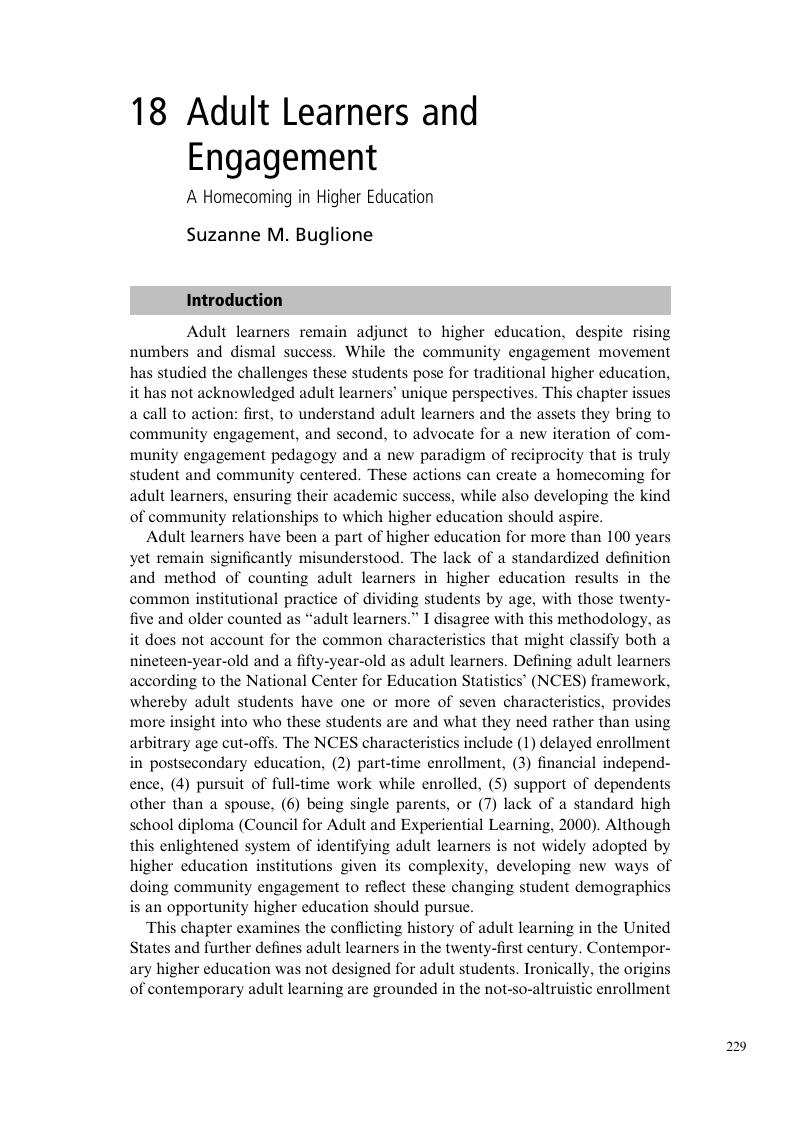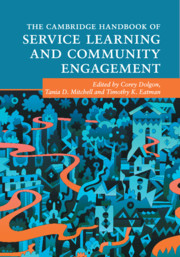Book contents
- The Cambridge Handbook of Service Learning and Community Engagement
- The Cambridge Handbook of Service Learning and Community Engagement
- Copyright page
- Contents
- Figures
- Tables
- Contributors
- Preface
- Introduction
- Part I Histories of Education and Engagement
- Part II Best Practices and Pedagogies
- Introduction to Part II
- 10 Service Learning Course Construction and Learning Outcomes
- 11 Catalyzing Ecologies of Transformative Community Partnerships
- 12 Community-Based Research
- 13 Critical Reflection and Civic Mindedness
- 14 Delivering on the Promise of Civic Learning
- 15 Universidad Sin Fronteras
- 16 Intercultural Competence as a Cornerstone for Transformation in Service Learning
- 17 Conjugating Equity and Ethics in Relationships between Community Organizations and Higher Education Institutions
- 18 Adult Learners and Engagement
- Part III Engaged Teaching and Scholarship across Disciplines
- Part IV Research, Teaching, Professions, and Policy
- Part V Critical Voices
- Conclusion
- Index
- References
18 - Adult Learners and Engagement
A Homecoming in Higher Education
from Part II - Best Practices and Pedagogies
Published online by Cambridge University Press: 23 February 2017
- The Cambridge Handbook of Service Learning and Community Engagement
- The Cambridge Handbook of Service Learning and Community Engagement
- Copyright page
- Contents
- Figures
- Tables
- Contributors
- Preface
- Introduction
- Part I Histories of Education and Engagement
- Part II Best Practices and Pedagogies
- Introduction to Part II
- 10 Service Learning Course Construction and Learning Outcomes
- 11 Catalyzing Ecologies of Transformative Community Partnerships
- 12 Community-Based Research
- 13 Critical Reflection and Civic Mindedness
- 14 Delivering on the Promise of Civic Learning
- 15 Universidad Sin Fronteras
- 16 Intercultural Competence as a Cornerstone for Transformation in Service Learning
- 17 Conjugating Equity and Ethics in Relationships between Community Organizations and Higher Education Institutions
- 18 Adult Learners and Engagement
- Part III Engaged Teaching and Scholarship across Disciplines
- Part IV Research, Teaching, Professions, and Policy
- Part V Critical Voices
- Conclusion
- Index
- References
Summary

- Type
- Chapter
- Information
- Publisher: Cambridge University PressPrint publication year: 2017
References
- 1
- Cited by

